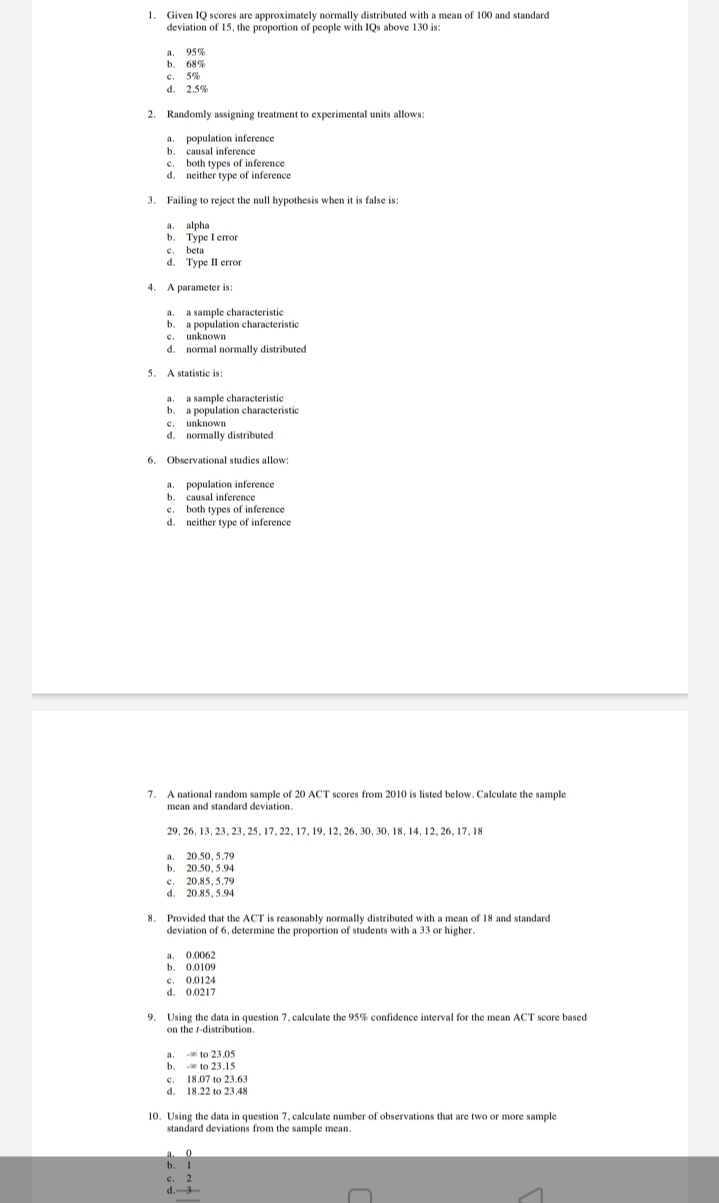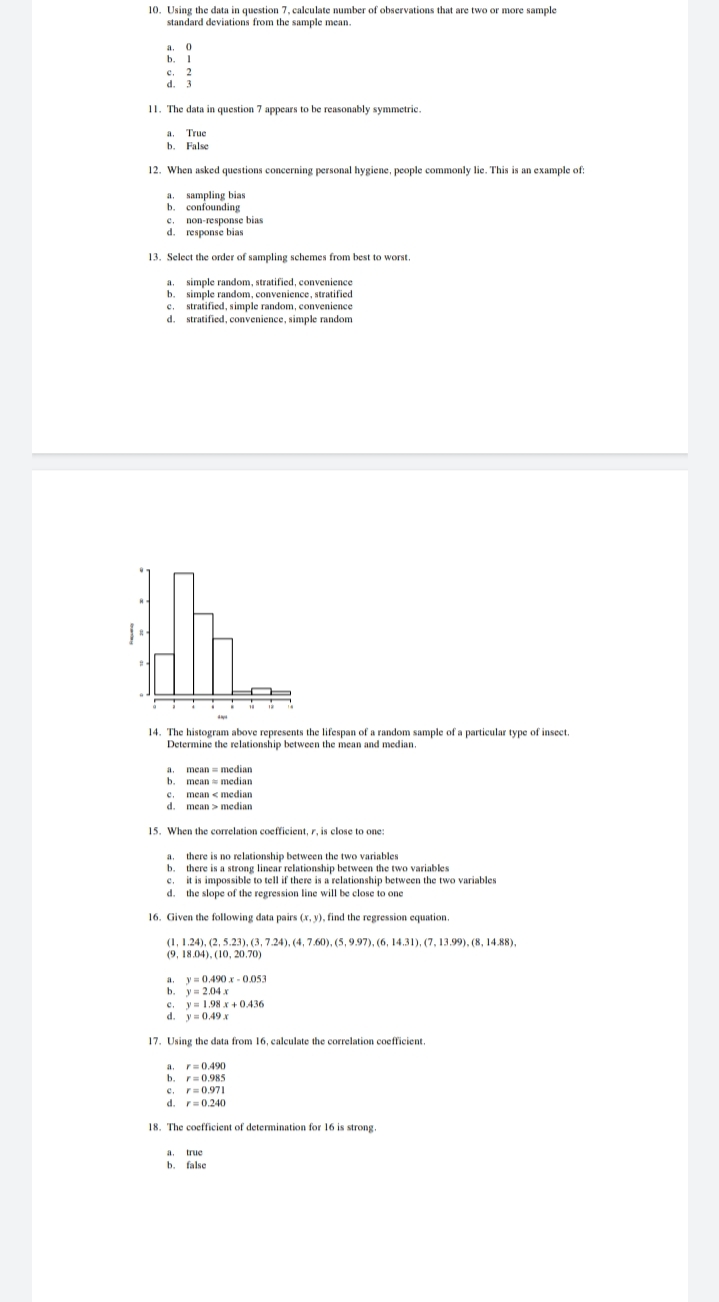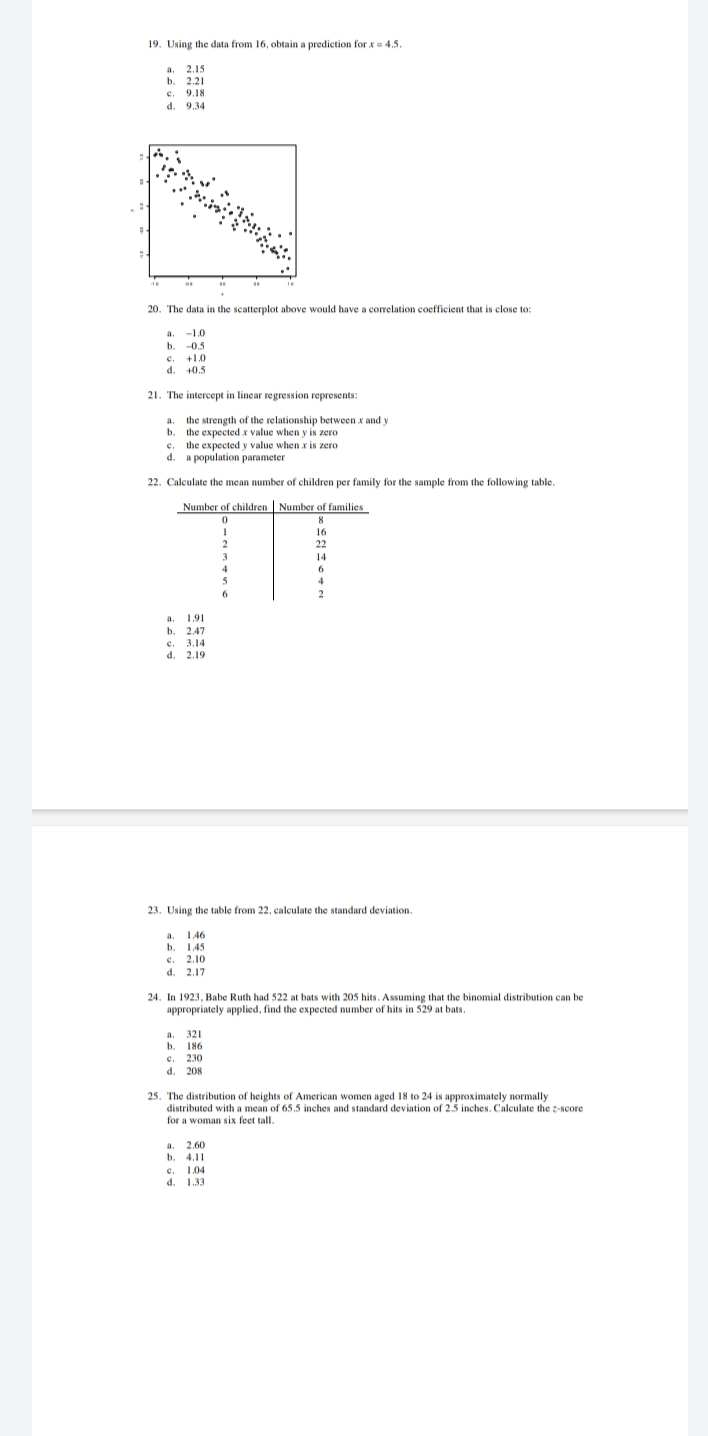Help please.. thankyou.
Justification needed
1. Given IQ scores are approximately normally distributed with a mean of 100 and standard deviation of 15, the proportion of people with IQs above 130 is: 95% 685 C. 5% 2.5% 2. Randomly assigning treatment to experimental units allows: population inference b. causal inference C. both types of inference neither type of inference 3. Failing to reject the null hypothesis when it is false is: alpha b. Type I error C. beta Type II error A parameter is: a. a sample characteristic b. a population characteristic c. unknown normal normally distributed 5. A statistic is: a. a sample characteristic b. a population characteristic unknown d. normally distributed 6. Observational studies allow: population inference b. causal inference c. both types of inference d. neither type of inference 7. A national random sample of 20 ACT scores from 2010 is listed below. Calculate the sample mean and standard deviation. 29, 26, 13, 23, 23, 25, 17, 22, 17, 19, 12, 26, 30, 30, 18, 14, 12, 26, 17, 18 20.50, 5.79 b. 20.50, 5.94 C. 20.85, 5.79 20.85, 5.94 8. Provided that the ACT is reasonably normally distributed with a mean of 18 and standard deviation of 6, determine the proportion of students with a 33 or higher. 4. 0.0062 b. 0.0109 0.0124 d 0.0217 9. Using the data in question 7. calculate the 95% confidence interval for the mean ACT score based on the f-distribution -40 to 23.05 b. -40 to 23.15 C. 18.07 to 23.63 18.22 to 23/48 10. Using the data in question 7, calculate number of observations that are two or more sample standard deviations from the sample mean. c.10. Using the data in question 7, calculate number of observations that are two or more sample standard deviations from the sample mean. 0 c. w N - 11. The data in question 7 appears to be reasonably symmetric. a, True b. False 12. When asked questions concerning personal hygiene, people commonly lie. This is an example of: a. sampling bias b. confounding c. non-response bias d. response bias 13. Select the order of sampling schemes from best to worst. a. simple random, stratified, convenience b. simple random, convenience, stratified C. stratified, simple random, convenience d. stratified, convenience, simple random 14. The histogram above represents the lifespan of a random sample of a particular type of insect. Determine the relationship between the mean and median. a, mean = median b. mean = median C. mean median 15. When the correlation coefficient, F, is close to one: a, there is no relationship between the two variables b. there is a strong linear relationship between the two variables C. it is impossible to tell if there is a relationship between the two variables d. the slope of the regression line will be close to one 16. Given the following data pairs (x, y), find the regression equation. (1, 1.24). (2, 5.23). (3, 7.24), (4, 7.60), (5, 9.97), (6, 14.31), (7. 13.99). (8, 14.88). (9, 18.04). (10, 20.70) y = 0490 x - 0.053 y = 2.04x C. y = 1,98 x + 0.436 d. y= 0.49 x 17. Using the data from 16, calculate the correlation coefficient. F = 0.490 b. F= 0.985 F = 0.971 d. F = 0.240 18. The coefficient of determination for 16 is strong. a, true b. false19. Using the data from 16, obtain a prediction for x = 4.5. , 2.15 b. 2.21 c. 9.18 d. 9.34 20. The data in the scatterplot above would have a correlation coefficient that is close to: a. -1.0 b. C. +1.0 d. +0.5 21. The intercept in linear regression represents: a. the strength of the relationship between x and y b. the expected x value when y is zero C. the expected y value when x is zero a population parameter 22. Calculate the mean number of children per family for the sample from the following table. Number of children Number of families 8 16 22 BUAUN- 14 a. 1.91 b. 2.47 c. 3.1 2.19 23. Using the table from 22, calculate the standard deviation. a, b. c. . 2.17 24. In 1923, Babe Ruth had 522 at bats with 205 hits. Assuming that the binomial distribution can be appropriately applied, find the expected number of hits in 529 at bats. 321 b. 186 C. 230 . 208 25. The distribution of heights of American women aged 18 to 24 is approximately normally distributed with a mean of 65.5 inches and standard deviation of 2.5 inches. Calculate the :-score for a woman six feet tall. 2.60 b. 4.11 C. d. 1.33









